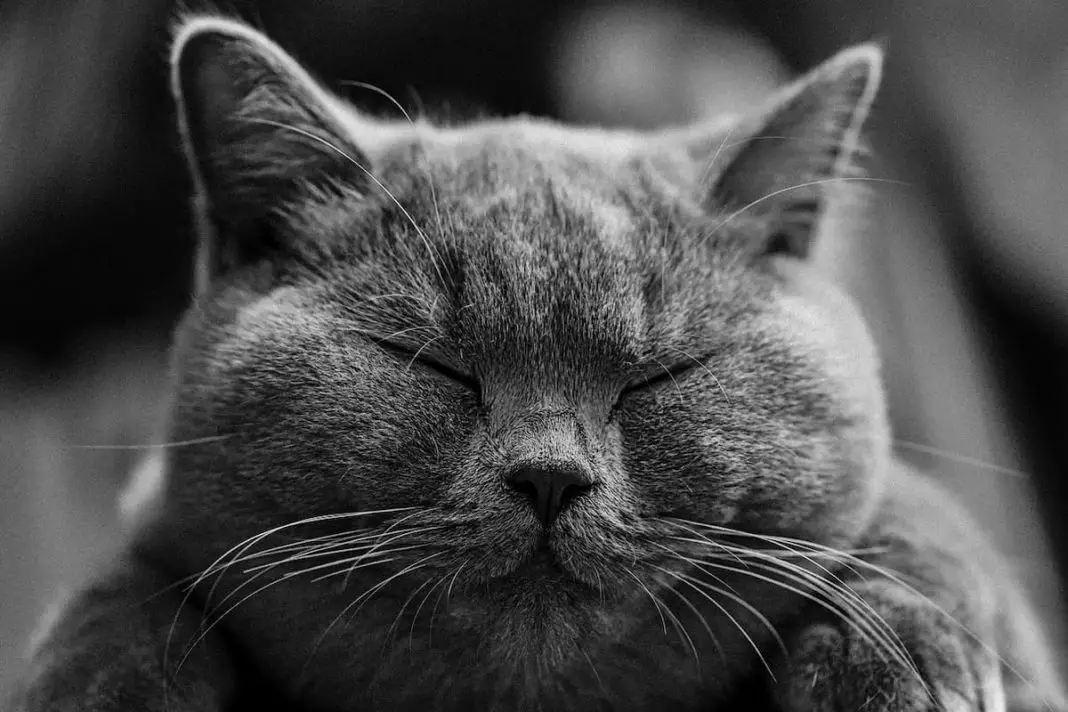How To Communicate With British Shorthair Cats
Quicklinks:
- Do Cats Understand Human Words?
- How Much Does Your Cat Understand You?
- How Can I Communicate With My Cat?
- But What About Cat-to-Cat Communication?
- The ABCs of Cat Language
- A Quick Summary of Cat Communication
Do Cats Understand Human Words?
If your British shorthair cat doesn’t come when you call them, it doesn’t necessarily mean that they’re ignoring you. It’s probable that they’re reacting nonverbally and you just can’t recognise it. Your British shorthair will lack the cognitive skills to interpret their owner’s language, but they can recognize when you talk to them. To put it another way, your cat will comprehend human language in much the same way that we understand our cats meowing. It’s similar to how you interpret your cat’s language by trying to read why they’re arching their back or swishing their tail.
Although your cat may not process human language in the same way, that other humans do, studies have shown that cats recognize and, in some cases will try responding to, human vocalizations, gestures and expressions — depending on whether they feel up to it, of course.
How Much Does Your Cat Understand You?
Scientists have only scraped the surface when it comes to understanding feline cognition. However, in the past, researchers have made some exciting discoveries about the cat’s brain.
In an article published by Animal Cognition, researchers noticed that the cats used during a study responded when their owners said their names. The cats mostly responded to the human’s voice through orienting behavior, like using ear and head movement, rather than through communicative behavior, like vocalization and tail movement.
You can try your own little study on your own at home: While saying your cat’s name, closely observe your cat. They may respond by pivoting their ears, or tilting their head to the side while looking at you or perhaps both at the same time. A chatty cat could try to respond vocally, but as this study shows, cats tend to use nonverbal communication to respond to their owner.
How Can I Communicate With My Cat?
Experts say that, unlike dogs, cats haven’t been domesticated to obey human orders. Keep in mind the next time your cat doesn’t respond to you when you call their name. Try not to take their snub personally, as it’s just their independent spirit.
Despite scientific evidence that your cat’s the boss in the home, it’s still important to regularly engage in conversation with your cat. For instance, you can talk to them during petting sessions, while you’re folding the laundry or at bedtime.
Regularly interacting with your cat using positive gestures and vocalization — like smiling and speaking in an upbeat tone of voice — will help reinforce the bond between a cat and owner. It also provides some insight into how your cat uses their own cat language, both nonverbal and verbal, to converse with you. Although we know that humans and cats don’t speak the same language, there’s no denying the special relationship between a cat parent and their feline friend.
Your cat, just like any other animal, has their own unique way of communicating, their own cat language, however trying to crack the code of these interactions can be tricky for humans. So, how does your cat communicate?
If your cat is trying to get your attention, then they’ll often meow, or some form of non-verbal communication, like silently staring at you, pawing at your leg, knocking your coffee cup off the kitchen table or scratching the couch, but these examples only scratch the surface of how your cat communicates.
Your Cat’s Meow
Cats do talk to their owners by normally using a “meow” to ask for their cat food bowl to be filled, or a whine for asking for more pets, and perhaps a hiss is to tell you to back off. Some cat breeds tend to be more vocal than the British shorthair. For example, the Russian Blue and the Siamese are very vocal and will chatter with you all day (and all night) long.
But What About Cat-to-Cat Communication?
If you share your home with more than one cat, then you probably already know that they interact using verbal and non-verbal (the use of tail or paws, scent markings, arching off the back, rolling around) cat language. However, whether or not the cats understand each other in the same way that us humans understand one another, is yet to be determined.
The ABCs of Cat Language
Post-kittenhood, it can be common for cats to not meow when interacting with each other. Rather, they rely on non-verbal body language to express their feelings towards other cats. However, they will sometimes use vocalization as part of their cat communication, which happens more during playtime, so when your cat growls, hisses or yowls at each other, sometimes in sport, sometimes in fear or sometimes in anger.
In many ways, how your cat behaves toward you isn’t much different from how they communicate with other cats: typically, nonverbally. Animal experts suggest that putting their tails up in the air, rubbing around your legs, or sitting beside you are exactly what cats will do to each other.
Although cats are considered less demonstrative with visual affection compared to dogs, this doesn’t necessarily mean that cats don’t have strong emotions. They just show and communicate it in a different way.
Although the research on cat behavior is sparse compared to the many studies conducted on dogs and how a dog thinks, behaves, and communicates, it is well documented that cats are smart creatures! Just because your cat has an independent nature, just know that they are still communicating with you even if you aren’t noticing — you just have to pay closer attention to some of their nonverbal cues to truly understand what they’re trying to tell you.
A Quick Summary of Cat Communication
- Cats respond a lot better to tones and actions, rather than words
- Using soft tones and gentle movements will get better responses
- Cats will normally warn you of their intentions, so heed their warnings
- Cats need patience








